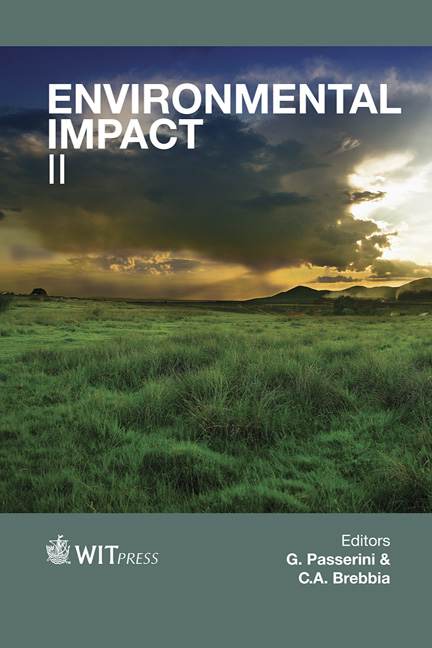Occurrence And Distribution Of Metals In The Outdoor Air In Ostrava’s Agglomeration
Price
Free (open access)
Transaction
Volume
181
Pages
11
Page Range
717 - 727
Published
2014
Size
1,425 kb
Paper DOI
10.2495/EID140611
Copyright
WIT Press
Author(s)
K. Lach, R. Muir, P. Danihelka, V. Mička & Z. Kaličáková
Abstract
In 2011 a series of measurements were started and samples collected to test air quality in two places in the town of Ostrava, a heavily industrialised city in the Czech Republic. As a reference, measurements were also made in Olomouc City, chosen for its much cleaner environment. A Fast Mobility Particle Sizer (FMPS Model 3091, TSI Inc., St.Paul, MN) was used to determine aerosol particle size distributions (5.6 nm to 560 nm). A wide range aerosol sampling system (Nano-ID Select, Naneum Ltd., UK) was used to collect size resolved samples in the range from 1 nm to 30 m on 12 stages. Mn, Cr, Ni, Fe, Pb, As, Zn and Cu were analysed at each stage of the Nano-ID sampler using ICP-MS. The morphology of the collected samples was investigated using Scanning Electron Microscopy (SEM). Mn and Cr showed very similar size distributions independent of the sampling place. These two metals are predominantly present in the nano-range. As and partially also Pb were predominantly accumulated in particles larger than 250 nm which indicated different sources from Mn and Cr. The majority of all particles were composed of iron oxide with a spherical morphology, originating most likely from the local metallurgical industry. The sources of bigger particles containing As or Pb were probably products of burning of black coal in heating plants or power plants. Size dependent distributions of particulate matter measured by FMPS confirm significant dependence on actual meteorological conditions. Keywords: air pollution, heavy metals, dust composition, metals concentration, metals mass distribution.
Keywords
air pollution, heavy metals, dust composition, metals concentration, metals mass distribution.





